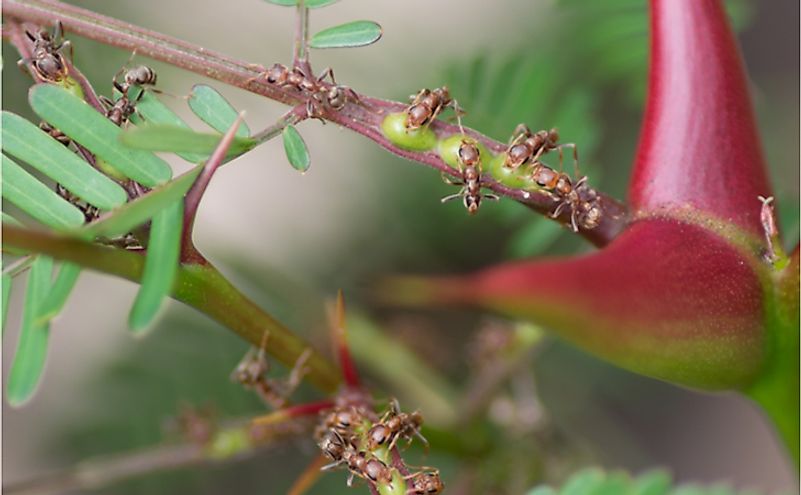Which Spider Is Known For Its Mostly Herbivorous Diet?

Most spiders are carnivorous feeding on insects and other small animals, including other spiders. However, in Central America, particularly in parts of Guatemala, Costa Rica, and Mexico, there lives a unique species of spider, which is mostly herbivorous. This remarkable spider is known as Bagheera kiplingi, and it belongs to the group of jumping spiders. No other species of spider is known to feed on plants.
Description
Bagheera kiplingi is sexually dimorphic and colorful. The males of the species have amber legs, and the abdomen is reddish and slender with green transversal lines. The cephalothorax is dark with greenish color at the upper part. The females of the species have sturdier amber-colored front legs while the other legs are light yellow. The females have a larger abdomen than males, and the cephalothorax is reddish-brown. The male Bagheera kiplingi was first described in 1896, and the female was described 100 years later.
Diet
Bagheera kiplingi spiders live in Mimosaceae trees, particularly a Vachellia species and feeds on the Beltian bodies which are fat and protein-rich nubs of the plant. The nubs are typically formed at the tip of the leaves and are involved in a mutualistic relationship between the plant and certain types of ants. The ants feed on Beltian bodies and guard the plants against intruders. The spiders avoid the ants guarding the Beltian bodies. It has been observed that the Beltian bodies account for about 90% of the spider’s diet. Occasionally the spider consumes acacia nectar and ant larvae. The spiders often cannibalize their conspecifics, particularly during the dry season.
Although the spider engages in predation, the analysis of the spider’s tissues has exhibited isotopic fingerprints observed in herbivores. This information is an indication that a large part of their diet is derived from plants. The majority of spiders injects digestive enzymes into their prey and sucks them after they are liquefied. The mechanism used by the Bagheera kiplingi spiders to metabolize and ingest the Beltian bodies is yet to be discovered.
How These Spiders Avoid The Ants?
As mentioned earlier, Mimosaceae plants have evolved a symbiotic relationship with Pseudomyrmex ants. These aggressive ants prevent herbivores from feeding on the plant. So, how do the Bagheera kiplingi avoid being bitten by these fierce protectors of their food source?
The Bagheera kiplingi spiders have special adaptations to avoid ants. They use different techniques like jumping to a different part of the plant when threatened with ant attack. They also avoid contact or confrontation with ants by building their nests on dry or old leaves or other parts of the plant where the population of the ants is sparse.
While the Bagheera kiplingi is relatively harmless to humans, some spiders can be really deadly. Here is a list of the deadliest spiders in the world.











